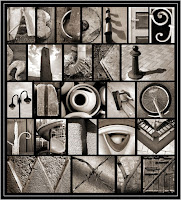Thanks to
@MarkMcVeigh and
@LiaKeyes for today's post. Follow me on Twitter
@rebf.
They tweeted about the
Washington Post's article
"The future of children's book publishing" by
Stephen Lowman, which you should all read, as it talks about the intersection between publishing a paper hard copy and the availability of book content online.
While I don't disagree with the article's premise - children's book publishing will be increasingly linked with the internet, e-books, and other electronic and web-based sources - I'm looking for more of a "but how does that make you feel?" reaction than a straight demarcation of the current reality. The current reality is this: many publishers are dedicating time and money to designing children's book concepts (mostly Middle Grade, Tween, and YA a.k.a. Teen novels) that make heavy use of online content to supplement the hard copy book, and thus, make it a success.

The
Diary of a Wimpy Kid by Jeff Kinney story aside (for those who don't know the story, read the Post article - he began the strip online before it was ever a book), I think I can safely claim that most book ideas today don't begin with an internet concept, even if some of them end up there. Yet, almost all books have online content, whether it's a simple website about the book and its author, or the more involved sites, such as these by children's publisher Scholastic:
Skeleton Creek, a book that uses a website and videos to help readers solve the clues to a terrifying mystery; and
 39 Clues
39 Clues, a 10-book series, each title written by a different author, where readers collect game cards they can plug in online and download extra clues to help them solve this series' mystery. Other publishers are also catching up/catching on to this trend.
Here's my point about all of this. First, a disclaimer: I am NOT a Luddite (one who opposes technology and technological change), as I hope you can tell by the fact that I'm writing this on a
blog. I use a computer every single day, and embrace technological advances from the flushing toilet to the iPod. Also, I recognize the importance, the validity, and even applaud the vision of meeting the new generations of readers on terms that are familiar to them. And yet. I can't help but be concerned that the Post article reported:
In January, a Kaiser Family Foundation report found that the time spent on all entertainment by kids from 8 to 18 rose from 6.5 hours a day five years ago to 7.5 hours a day. But only 25 minutes were typically spent reading a book. The Department of Education found that in 1984 only 8 percent of 13-year-olds and 9 percent of 17-year-olds reported that they "never or hardly ever" read for fun on their own. By 2008, the percentage had jumped to 24 percent for both groups. (Washington Post, "The Future of Children's Book Publishing", 03.21.10)
If I'm reading that correctly, on average, kids spend
7.5 hours a day on "entertainment," which I'm going to assume doesn't mean they're at school or doing homework, only the
.5 portion of which is maybe spent reading, but
24% of those kids don't even bother to spend that .5.
Now, I'm not going to start to rant and rave, but I have to be honest when I say that I'm scared because I'm assuming that the majority of that 7.5 hours (and where on earth do they get that much free time?!) isn't spent climbing a tree, but is instead parked in front of some piece of technology, not interacting with the world around them.
But, you're going to say, they do interact with people via gchat, IM, twitter, email, electronic gaming sites, etc. etc. etc. And why would it be significantly healthier for them to be spending that 7.5 hours with "their nose stuck in a book," also not interacting with the world around them?
All valid points -
my point is simply this: how can we, do we want to, make books that are engaging and help kids to engage in the rest of the world in a way not
solely related to technology? Can we help kids to unplug, take a break, interact with the fam (yes, assuming the fam is willing and able to interact with them), notice the world immediately around them rather than confined in that 12-48 inch screen in front of them? Is the future of children's publishing going to encourage only multimedia interaction, or IRL (in real life) interaction, too?
Your thoughts?
















































